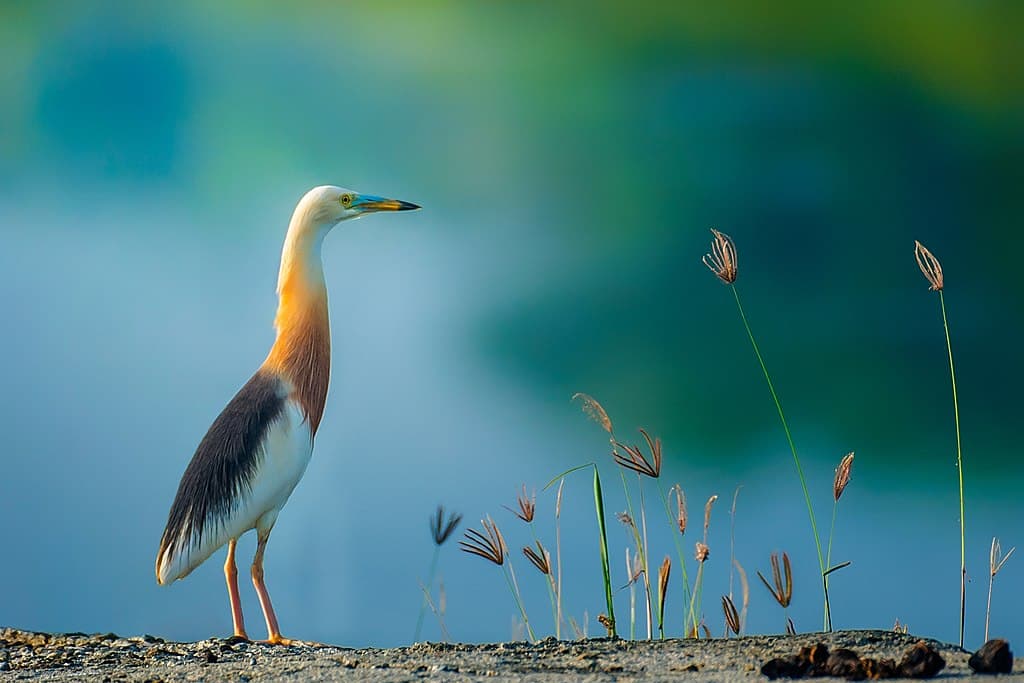Herons are both coastal and freshwater birds, and there are 72 heron species in total. As for Cambodia, we have natural habitats that provide home to 5 heron species. A heron can kink its neck into an S-shape, and it can also extend and retract its neck as well. So what are the 5 heron species that are living in Cambodia nowadays? Let’s find out what they are below.
Gray Heron (ក្រសាប្រផេះ)
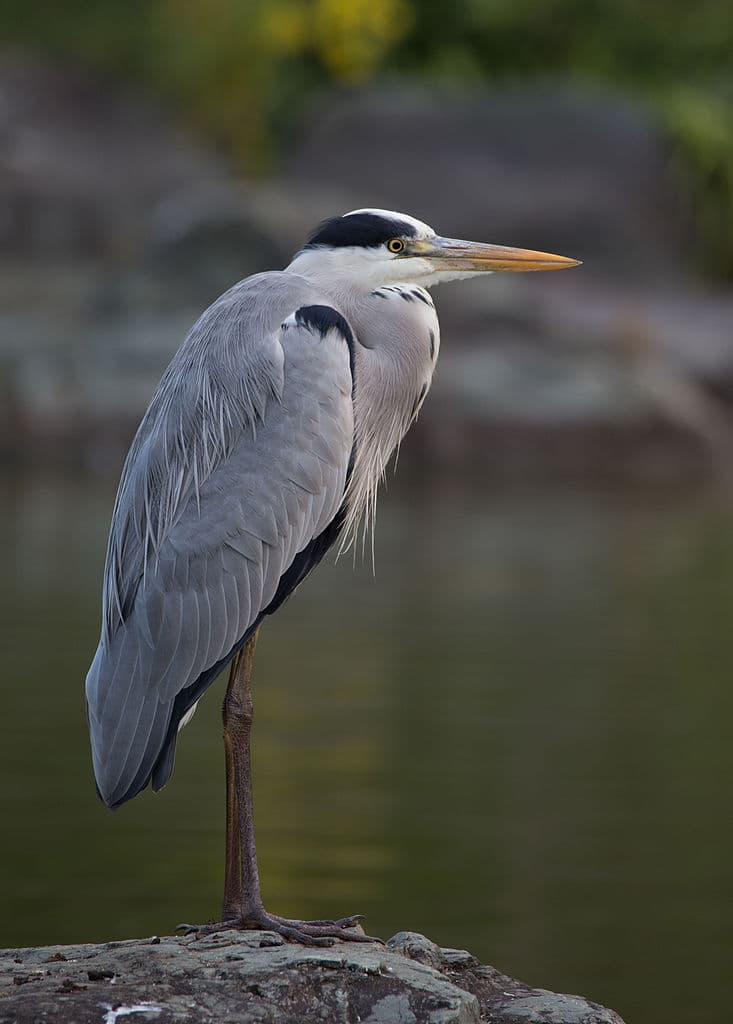
The gray heron is a long-legged wading bird that stands up to 1 meter tall, weighing from 1 to 2 kilograms. The body and wings of a gray heron are gray on the upperparts while being grayish white on the underparts. A gray heron has a white head and neck with a broad black stripe that extends from its eye to its black crest. It has a long and sharp pointy beak that is pinkish-yellow, and its legs are brown.
This heron species has an extensive range throughout Asia and Europe, and it is also present in some parts of Africa. They inhabit watery habitats where they can wade and where food supplies are abundant. These birds are common in coastal lagoons, ditches, estuaries, flooded areas, lakes, marshes, mountain tarns, ponds, reservoirs, rivers, and sea shores. They feed on amphibians, crustaceans, fish, insects, and small mammals as well as ducklings or even bigger birds. The thing is that they are apex predators in their aquatic ecosystem, so they have very few predators. Their main predators are the ones that harm their eggs and young such as crows and kites.
Great-Billed Heron (ក្រសាចំពុះធំ)
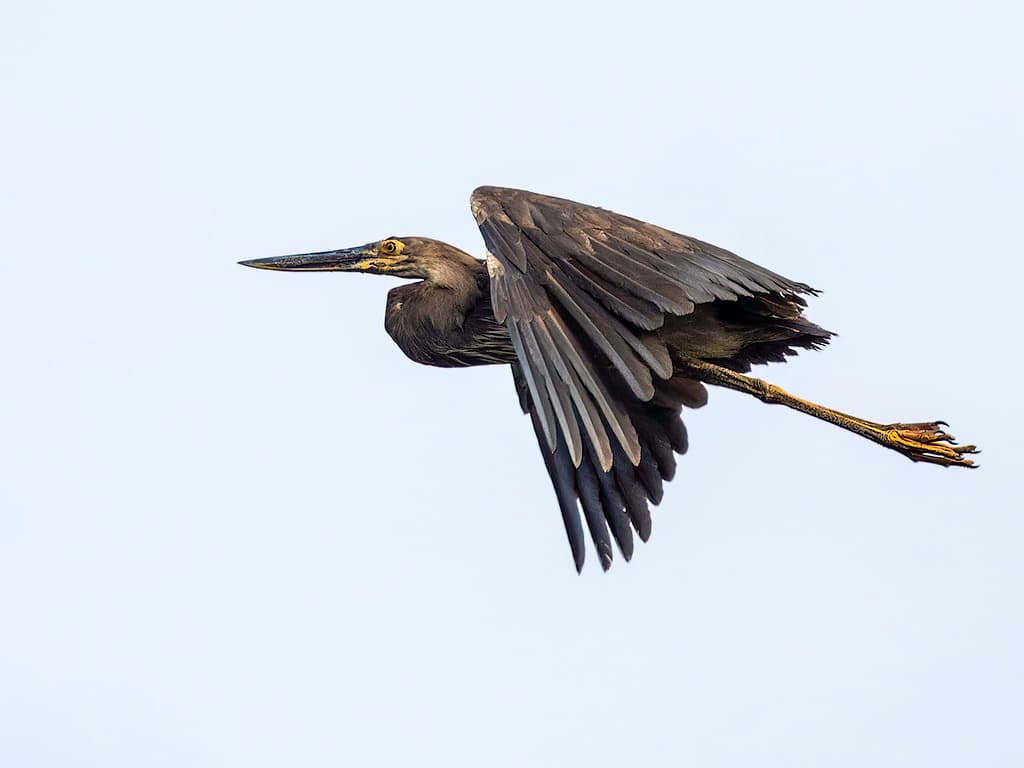
Slightly larger than the gray herons, great-billed herons are 1.15 meters tall, weighing up to 2.6 kilograms. This bird has a dark gray plumage with a more brownish neck. Adults in breeding seasons have distinct white-tipped grayish plumes on their breasts and scapulars. It has a long sharp bill that it uses to spear fish in shallow water before knocking it out and swallowing it. As for their legs, they are dusky gray to olive-gray.
The range of this heron species is quite large, extending from Asia and Australasia to Australia, India, and Southeast Asia. Their habitats include coral reefs, islands, large rivers, lagoons, and mangroves along with shallow ponds sometimes. Great-billed herons are solitary, and they fly in small flocks though it is seldom. These herons are shy birds and solitary hunters so they always try to avoid human disturbance. Apart from fish, they also feed on crabs and mussels since their large dagger-shaped bills are very strong.
Javan Pond Heron (កុកក្រកក្បាលត្នោតខ្ចី)
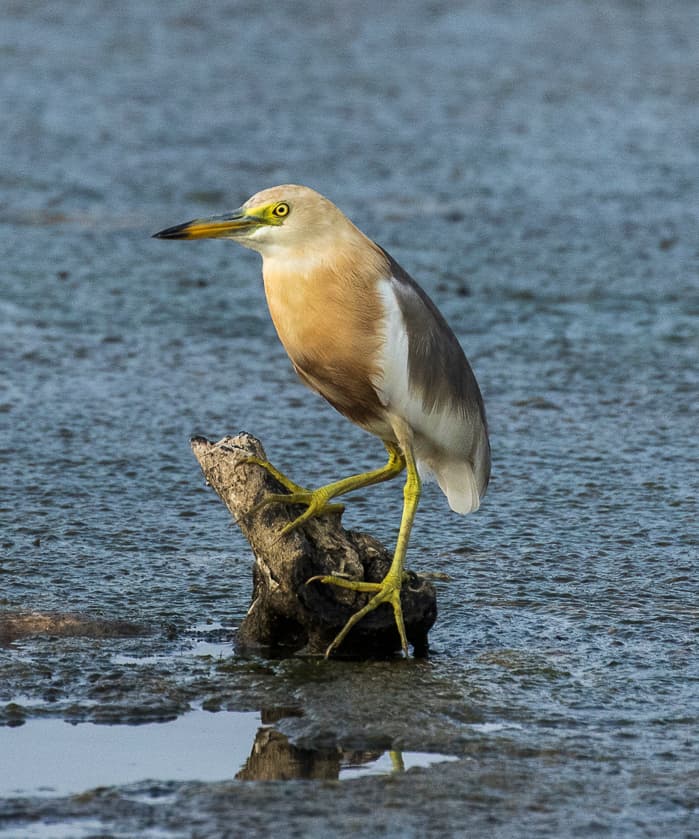
The Javan pond heron is a small member of the heron family that only grows to about 45 centimeters tall. Its overall color is orange which turns white during the breeding season, and the wings remain white all year. The bill is yellow is a black tip, and the eyes and legs are also yellow. It got its name from its habitats that are close to ponds and shallow fresh wetlands. Their range occurs in the East Indies and Southeast Asia, where they live in flooded grasslands, marshes, and ponds. They can also be found in coastal flats, mangroves, margins of lakes, and reefs. The diet of this heron species consists of crabs, fish, frogs, and insects such as ants, beetles, grasshoppers, and termites.
Purple Heron (ក្រសាធ្នង់)
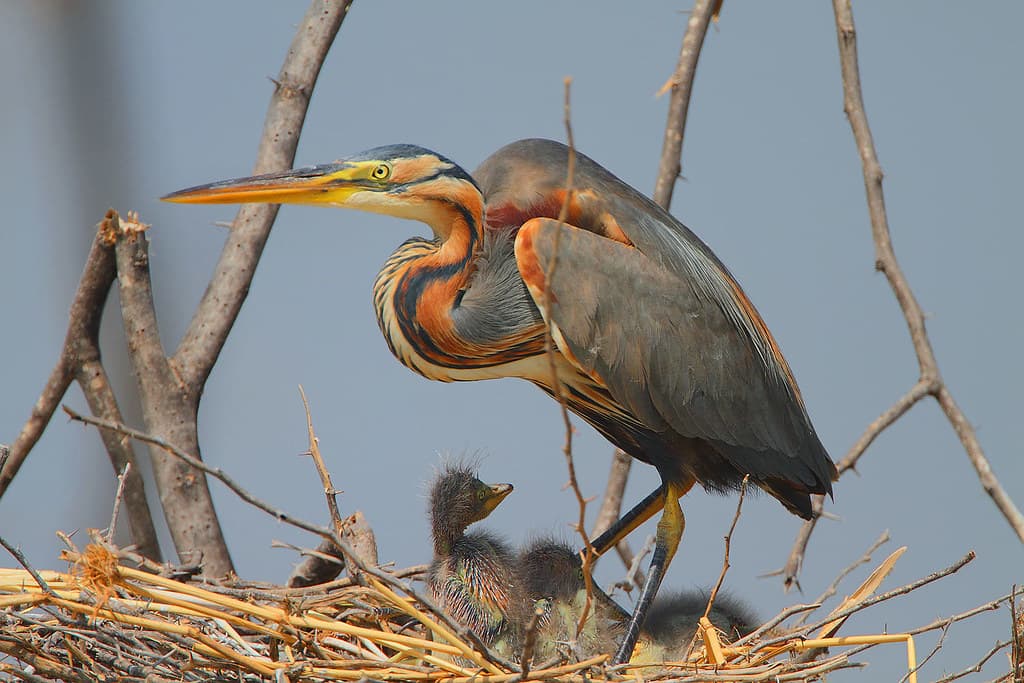
Purple herons are a large heron species that stand from 70 to 94 centimeters tall with a 1.2 to 1.5 meters wingspan. They have dark reddish-brown plumage, and black crown and forehead with a dark stripe down the back of the neck. Speaking of neck, it has a long neck that is often in an S-shape. Purple herons also have a 15 centimeters long beak that is powerful enough to spear through fish.
The range of these herons is distributed in Africa, Asia, and Europe, where they breed and live. They inhabit flooded reeds, lagoons, lakes, marshes, sedge beds, and other freshwater habitats that are surrounded by dense vegetation. Sometimes they also visit canals, ditches, mudflats, and river banks for more food. Purple herons use their bill to jab through not only fish but also amphibians, small invertebrates, small birds, and small rodents.
Striated Heron (ក្រសាស្វាយ/ក្រអាច់)

Also goes by the name little heron, little green heron or mangrove heron, striated heron is a small heron. It stands only around 44 centimeters tall. Adult striated herons have blue-gray back and wings with white underparts, a black cap, and yellow legs. They also have a dark line that extends from the bill to under the eye that you can easily recognize. Little herons also have a relatively heavy dark bill that helps with hunting as well.
The range of these herons is very broad including Africa, Asia, Australia, South America, and Southeast Asia. Their habitats across their range are brushy river edges, lake margins, muddy or rocky shores, pools, river swamps, and salt flats. They also inhabit around humans such as in canals, ponds, and rice fields. Usually, they stand still at the water’s edge to wait for prey to come by so that they can ambush. As a small bird, it feeds on small aquatic insects, fish, and frogs.
Related Post: 5 Egret Species In Cambodia
